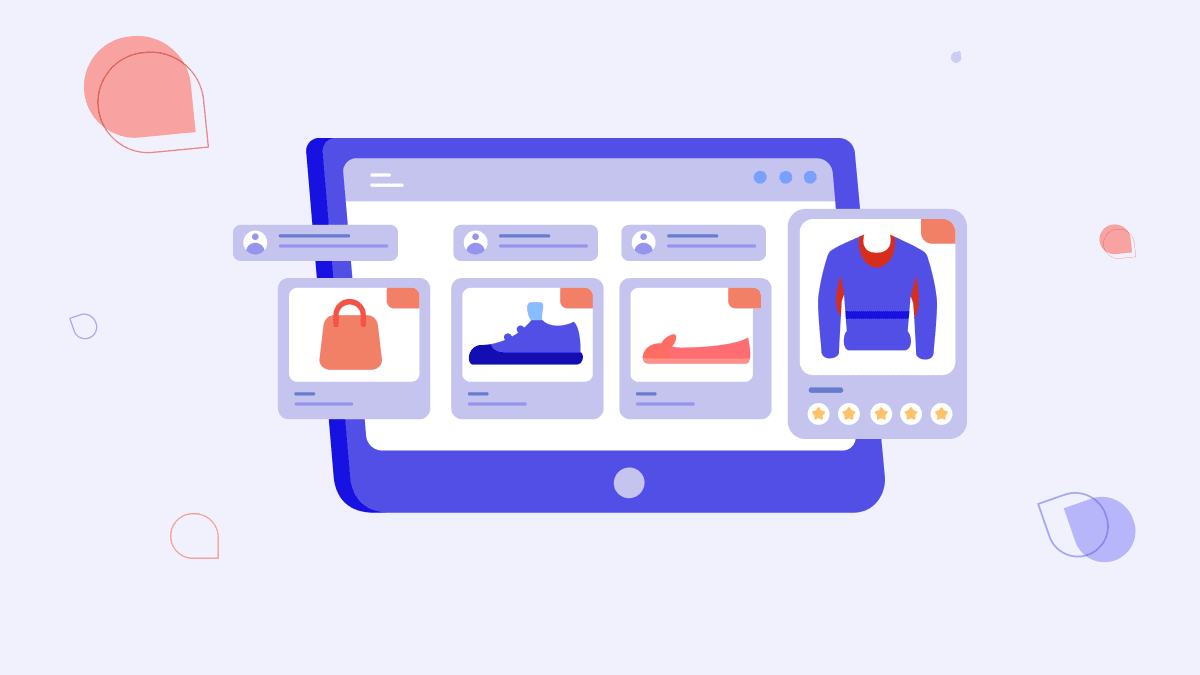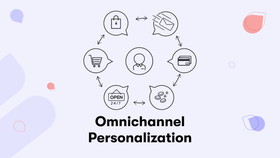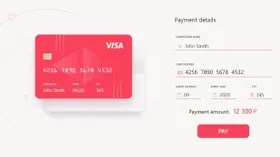How To Build An eCommerce Quiz That Converts
An eCommerce quiz can boost conversions, but only if it’s built correctly. Discover the key elements of a high-performing, revenue-generating quiz.
Published January 29, 2025.

Quizzes have become a powerful tool for eCommerce brands looking to improve engagement and increase conversions. Yet, many businesses struggle to create quizzes that do more than entertain—they need to drive real sales. A poorly designed quiz can lead to low completion rates, mismatched product recommendations, and wasted marketing efforts. Without a clear strategy, it’s easy to miss out on the full potential of interactive content.
A well-crafted eCommerce quiz guides customers through the buying journey, helping them find products that fit their needs while providing businesses with valuable insights. The challenge lies in structuring the quiz effectively—asking the right questions, delivering meaningful results, and integrating it seamlessly into the overall marketing strategy. This guide breaks down the key elements of a high-converting eCommerce quiz and how to make it a reliable revenue driver.
The role of quizzes in eCommerce
Incorporating quizzes into eCommerce platforms serves as an effective method to engage customers and guide them toward products that align with their preferences. By prompting users to answer tailored questions, quizzes can recommend items that suit individual tastes, thereby enhancing the shopping experience.
Well-crafted eCommerce quizzes offer several benefits that can positively impact conversion rates:
Enhanced personalization: Quizzes collect specific information about customer preferences, enabling personalized product recommendations. This level of customization can lead to higher customer satisfaction and increased likelihood of purchase.
Improved engagement: Interactive content like quizzes captures customer interest, encouraging them to spend more time on the website. This increased engagement can reduce bounce rates and foster a stronger connection with the brand.
Higher Conversion Rates: By simplifying the decision-making process and providing tailored suggestions, quizzes can alleviate choice overload, making customers more confident in their purchasing decisions. This can result in higher conversion rates.
Valuable customer insights: The data gathered from quiz responses offers insights into customer preferences and behaviors. This information can inform targeted marketing strategies and personalized email campaigns, further enhancing customer engagement.
Implementing eCommerce quizzes not only personalizes the shopping experience but also provides businesses with actionable data to refine their marketing efforts, ultimately leading to improved conversion rates and customer loyalty.
Understanding your target audience
Knowing your audience allows you to craft relevant and appealing questions and outcomes. This relevance enhances the user experience and increases the likelihood of users completing the quiz and acting on the recommendations provided.
Tips for researching customer preferences and pain points
To effectively research your customers' preferences and pain points, consider the following methods:
Collect customer feedback: Use surveys, interviews, and customer support interactions to gather insights into what customers like and dislike.
Analyze behavior: Study purchasing patterns, website analytics, and product usage data to identify trends and areas where customers may face challenges.
Monitor social media: Observe discussions and comments on social platforms to understand customer sentiments and emerging needs.
How to align quiz content with audience expectations
Once you've gathered sufficient information about your audience, align your quiz content by:
Personalizing questions: Develop questions that speak directly to the interests and concerns of your audience, making the quiz feel more engaging and relevant.
Offering valuable outcomes: Ensure that the quiz results provide meaningful recommendations or insights that address the identified preferences and pain points of your customers.
Maintaining brand consistency: Keep the tone and style of the quiz consistent with your brand to reinforce recognition and trust.
By thoroughly understanding your target audience and aligning your quiz content accordingly, you can create an interactive experience that not only engages users but also drives conversions and fosters brand loyalty.
Designing engaging quiz content
Designing engaging quiz content is essential for capturing user interest and guiding them toward products that suit their preferences. An effective eCommerce quiz entertains and educates, leading to higher engagement and conversion rates.
Key elements of a quiz that capture attention
Clear and engaging questions: Craft straightforward questions that resonate with the user's interests. Avoid complex language to ensure users remain engaged throughout the quiz.
Concise and easy-to-understand answer options: Provide answer choices that are simple and directly related to the questions. This clarity helps users make quick decisions, maintaining the quiz's momentum.
Best practices for question structure
To maintain user interest, keep the quiz short, ideally around 5-6 questions. This length is sufficient to gather the necessary information without overwhelming the user. Incorporate relevant images alongside questions to make the quiz visually appealing and to aid in conveying the message effectively.
Creating a sense of curiosity and excitement
Engage users by framing questions that pique their interest and encourage them to learn more about themselves or the products. Using interactive elements and a conversational tone can make the quiz feel more personalized and enjoyable.
By focusing on these elements, you can design an eCommerce quiz that not only captures attention but also effectively guides users toward products that meet their needs, enhancing their overall shopping experience.
Choosing the right quiz type for your eCommerce store
Selecting the appropriate quiz type for your eCommerce store is vital for engaging customers and achieving your business objectives. Different quiz formats can cater to various goals, from increasing sales to enhancing customer satisfaction.
Types of quizzes that drive engagement
Product recommendation quizzes
These quizzes guide customers to products that suit their specific needs or preferences, simplifying the decision-making process.
Example: A skincare brand might use a quiz to recommend products based on skin type and concerns.
Personality quizzes
These quizzes create a personalized shopping experience by aligning products with customers' personality traits.
Example: A fashion retailer could suggest clothing styles that match the user's personality.
Matching quiz type to business goals and product offerings
Aligning the quiz type with your business goals and product range is essential. If your aim is to assist customers in selecting the right product from a diverse catalog, a product recommendation quiz would be appropriate. Conversely, if you want to engage users in a fun and shareable way, a personality quiz might be more suitable.
Examples of successful quiz types in different industries
Beauty industry: IL MAKIAGE's "PowerMatch" foundation shade finder quiz helps customers identify their perfect foundation shade, enhancing user satisfaction and reducing return rates.
Nutrition sector: Gainful offers a personalized nutrition quiz that tailors protein powder recommendations to individual fitness goals and dietary needs, fostering a customized customer experience.
Fashion industry: A clothing retailer might implement a style preference quiz to suggest outfits that align with the customer's fashion sense, increasing the likelihood of purchase.
By carefully selecting a quiz type that resonates with your target audience and aligns with your business objectives, you can create an interactive tool that not only engages customers but also drives conversions and loyalty.
Implementing conversion-boosting strategies
Implementing effective strategies in your eCommerce quiz can significantly enhance user engagement and boost conversion rates. By focusing on clear calls to action, unobtrusive lead capture methods, and seamless integration with email marketing, you can create a cohesive and persuasive customer journey.
Incorporating strong calls to action
A compelling call to action (CTA) guides users toward the desired next step, such as completing a purchase or subscribing to a newsletter. To craft effective CTAs:
Be clear and concise: Use straightforward language that tells users exactly what to do, like "Get Your Personalized Recommendations."
Create urgency: Phrases like "Shop Now" or "Limited Time Offer" can encourage immediate action.
Highlight benefits: Emphasize what users will gain, such as "Discover Your Perfect Match."
For inspiration, consider reviewing various CTA examples that have proven effective in different contexts.
Using lead capture techniques without being intrusive
Capturing leads is essential, but it's important to do so without disrupting the user experience. To achieve this:
Integrate lead capture within the quiz: Prompt users to provide their email addresses to receive personalized results, ensuring the request feels natural and value-driven.
Offer incentives: Provide discounts or exclusive content in exchange for contact information, making the proposition more appealing.
Keep forms short: Ask only for essential information to reduce friction and encourage completion.
Tips for integrating quizzes with email marketing and follow-ups
Connecting your quiz to your email marketing efforts can nurture leads and drive conversions. Consider the following strategies:
Automate follow-up emails: Send personalized emails based on quiz responses, offering tailored product recommendations or content.
Segment your audience: Use quiz data to categorize subscribers, allowing for targeted campaigns that resonate with specific interests or needs.
Monitor and optimize: Track the performance of your email campaigns and adjust your strategies based on open rates, click-through rates, and conversions.
By thoughtfully implementing these strategies, your eCommerce quiz can become a powerful tool for engaging customers, capturing valuable leads, and enhancing your overall marketing efforts.
Technical considerations and tools
When developing an eCommerce quiz, it's essential to consider the technical aspects to ensure a seamless user experience across all devices. Selecting the right tools and focusing on user experience can significantly impact the effectiveness of your quiz.
Recommended tools for building eCommerce quizzes
Several platforms can assist in creating interactive and engaging quizzes:
ConvertFlow: Offers an eCommerce quiz builder that enables the creation, personalization, and A/B testing of quizzes without the need for designers or developers.
Octane AI: Provides tools to easily create quizzes and surveys, helping recommend products, collect feedback, and understand customer preferences.
Woorise: Features customizable quiz templates and an intuitive interface, making it suitable for users aiming to generate leads and engage customers.
User experience considerations for seamless integration on your website
To ensure your quiz integrates smoothly with your website:
Consistent design: Match the quiz's visual elements with your site's branding to provide a cohesive experience.
Intuitive navigation: Design the quiz flow to be straightforward, minimizing the steps required to complete it.
Fast loading times: Optimize images and scripts to prevent delays that could deter users.
How to ensure quizzes are mobile-friendly
With a significant number of users accessing content via mobile devices, it's vital that your quiz is mobile-responsive:
Responsive design: Use flexible layouts and scalable images to adapt to various screen sizes.
Simplified content: Keep questions and answer choices concise to fit smaller screens comfortably.
Touch-friendly elements: Ensure buttons and interactive components are adequately sized and spaced for touch inputs.
By addressing these technical considerations, you can create an eCommerce quiz that not only engages users but also functions seamlessly across different devices, enhancing the overall user experience.
Analyzing quiz performance and making improvements
To maximize the effectiveness of your eCommerce quiz, it's essential to analyze its performance and make data-driven improvements. By monitoring key metrics, gathering customer feedback, and adjusting content accordingly, you can enhance user engagement and drive conversions.
Metrics to track for quiz success
Monitoring specific metrics provides insights into how well your quiz is performing:
Completion rate: The percentage of users who finish the quiz indicates its engagement level. A low completion rate may suggest that the quiz is too long or not engaging enough.
Lead generation: Track the number of leads captured through the quiz to assess its effectiveness in building your contact list.
Conversion rate: Measure the percentage of quiz participants who make a purchase or take a desired action post-quiz. This reflects the quiz's impact on sales.
Average order value (AOV): Evaluate if quiz-takers tend to spend more per order compared to other customers, indicating the quiz's influence on purchasing decisions.
Regularly reviewing these metrics helps identify areas for improvement and opportunities to enhance the quiz's performance.
How to gather and use customer feedback for quiz optimization
Customer feedback is invaluable for refining your quiz:
Post-quiz surveys: Implement brief surveys after the quiz to collect participants' thoughts on its relevance and enjoyment.
Monitor social media and reviews: Pay attention to comments and discussions about the quiz on social platforms to gauge public perception.
Customer support interactions: Analyze inquiries related to the quiz to identify common issues or suggestions.
Using this feedback allows you to make informed adjustments that align with user preferences and expectations.
Adjusting quiz content based on data and user responses
Data-driven adjustments can significantly improve quiz effectiveness:
Refine questions: If certain questions have high drop-off rates, consider rephrasing or replacing them to maintain engagement.
Personalize outcomes: Use collected data to tailor quiz results more closely to individual user preferences, enhancing relevance.
Test different formats: Experiment with various question types or themes to determine what resonates best with your audience.
By continuously analyzing performance metrics and incorporating user feedback, you can optimize your eCommerce quiz to better serve your customers and achieve your business objectives.
Your perfect eCommerce digital marketing agency awaits
Creating an effective eCommerce quiz is just the first step in optimizing your online store’s conversion rates. To take your marketing efforts to the next level, you need the right expertise. Mayple connects you with top-rated eCommerce marketing agencies that specialize in building high-converting quizzes, improving customer engagement, and driving sales.





